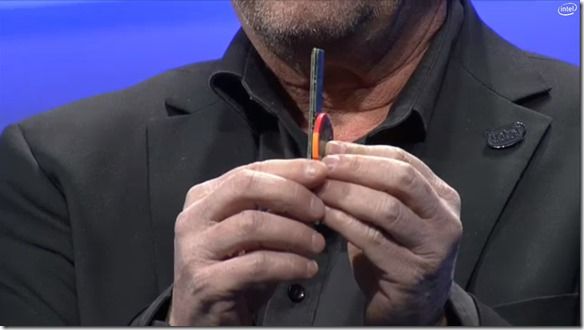 The big CES2014 Ultrabook news summary is that there isn’t really anything major to talk about, which needs talking about.
The big CES2014 Ultrabook news summary is that there isn’t really anything major to talk about, which needs talking about.
Given that there were no major Ultrabook announcements or evidence of Ultrabook marketing at CES2014 we now have to think about the future of the Ultrabook and leading-edge notebooks. Importantly, who’s going to carry the flag for new PC technologies? Or was CES2014 just a break in the project to allow Intel to promote themselves in newer emerging technologies? What’s next for the Ultrabook, Ultrabook 2014.
As we went into the CES2014 news stream last week I wrote the following:
One of the most interesting and important Ultrabook-related topics to come out of CES this year will be a feeling. What sort of marketing push is the Ultrabook category going to get in 2014? Will Intel announce improvements such as built-in 3D cameras? Will we get detail on the 14nm Broadwell processors? Or will we get evidence that the Ultrabook project is largely done?
Based on what we saw in the (very impressive) Intel keynote, the press releases and the product launches there’s very little marketing money being used to promote Ultrabooks this week. Ultrabooks got a mention, but only in relation to 3D cameras and natural language speech recognition. The only significant products we saw from manufacturers were the Lenovo Carbon X1 refresh and the ASUS Transformer Book TD300. The Lenovo 2 launch was aimed at mainstream markets as was the Lenovo Miix 2 10 and Sony Vaio FIT 11A Flip. The only product that I thought was leading-edge was the Lenovo Miix 2 11 on a Core platform. More tablet than Ultrabook though. Other announcements included the Toshiba Kirabook refresh, Samsung Series 9 15-inch refresh and the Acer Aspire S3 re-design.

It’s not really a surprise. Intel had always said that 4th-Gen Core would see the realization of the ultimate Ultrabook product and along the way the project has been responsible for introducing (and lowering the cost of) touch, fast storage, NFC, better screens, more attractive designs and of course, the SoC processors that have enabled some amazing hybrid designs, battery life improvements and always-on capabilities.
CES2014 creates a question though. Who is going to direct the OEMs to keep up the momentum or are the OEMs going to spiral into low-cost notebook territory and leave the innovative-but-accessible middle-ground of Ultrabooks to die-off leaving ultra high-end and ultra low-end? Intel is clearly continuing to push forward with technology and the integrated Realsense 3D sensors (watch out for that Dell announcement soon. Image below right is a sneak peek!) are proof of that but with marketing-money fully on wearable technology at CES 2014, OEMs could be more interested in that as their next high-margin savior.
Business-as-usual is not something I want to see in the notebook market and, to be honest, not something I’m interested in writing about but I don’t expect the Ultrabook story to be over just yet. In terms of coverage here on Ultrabooknews though there cold be changes. I expect to continue to review Ultrabooks and leading-edge notebooks but will probably extend out to include interesting hybrid models too. Baytrail-M devices like the Lenovo Yoga 2 11 are likely to turn up in your feeds. We’ll, of course, continue to track the technology and I’ve already seen some interesting Broadwell information under NDA. Intel’s IDF in Beijing will give us more on that. I’ll also be meeting with Intel at MWC in Barcelona next month. They’ve invited me out to look at their tablet and software developments so there will be a chance to get more detail on what’s happening to the Ultrabook project and to get some inside info on their Dual-OS platform. After that it’s the boring-but-important CeBIT event and then a break until Computex in June where you can expect the full Broadwell show to begin.
Keywords to watch in 2014 are: Windows 8.2, dual-OS, Perceptual Computing, Realsense, Natural Language, Wireless Power, Wireless Display, WiGig, 2-in-1 and of course, Broadwell.











Just more dissapointing news after the yoga 2 11…:)
New computers and computer designs is allways the most interesting for me when reading the CES coverage, and like you say, it hasent been exciting at all.
The one boring thing about laptops in general though, as compared to mobile, is the lack of vision and the lack of creative software development. Laptops need a truer renaissance then what intel and windows (and apple) seem to be able to offer. When your phone can do everything imaginable and is compatible with everything, and the only thing you actually need is a keyboard and a larger screen, then todays laptops are pretty dull. What if they all possessed the following properties:
convertible
3G/4G
lightweight
touch
GPS
whole day batterylife
high res screen and good scaling
outdoors usable screen
lots of usefull apps
pen support and good apps for students to take manual notes and record lectures
making calls
syncing computer with phone even for texts and calls
nice speakers
no bezels
fan off under normal workloads
perfect touch pad
no crapy underside and smooth finnish
This sounds like a stupid dream chenario, but we allready have almost all this in mobile for a lower prize, and without this the comsumer laptop market will, and probably deserves to, die in a few years.
You can’t have zero bezels, because Windows 8 uses extensive use of “swiping”, which needs bezels. But I agree they can be far smaller than today.
Also, being a glossy display makes it hard to use outside. Glossy is kind of a requirement for Touch because less reflective techs like Matte gets dirty and loses sensitivity after extensive uses. That’s not what Android/iOS Tablets have either.
We could ad to that:
-software key icons on keyboard for changing language, gaming, special signs etc
– standards for charging, displays etc
– unified port for everything including charging and display
Still, we have it in mobile.
With the advent of good Windows 8 tablets, the Ultrabook will inevitably become less desirable for those not needing to type for long periods.
I’ve been experimenting with using a PC in my office when I need a bit of power, and a Surface RT at all other times. This works out at roughly 10% PC / 90% tablet. My intention is to push the whole office (6 people) in this direction, with 2 shared PCs, a MAC Pro, and six Surface 2 tablets with monitors and keyboards/mice.
We all do a fair bit of working away from the office and I’d considered Ultrabooks, but for the same kind of battery life the Surface provides I’d have to spend 2 or 3 times the cost of one on them, particularly when you consider adding the cost of Office.
I could also add that the Surface 3, if having a chip capable of handling third party programs, and hopefully a 128gb option, would be more useful than any Ultrabook, other than the very high end versions. That might be a big “if” though.
I dont think they will integrate both ARM and x86. Thats a far shot, though they might swap the ARM for a bay trail follow-up, ditch ARM, and have both a low end and a high end x86 surface 3/3pro. (fyi, x86 is the “chip” that runs stuff on full windows:)
Bay Trail is what I’m hoping for, although I’ve read that they might upgrade to the Tegra K (I’ve no idea if they run third party programs).
It seems to me that if tablet makers go down the route of low/high end full Windows tablets, then the days of the ultrabook are numbered.
I’m personally planning on going back to having a desktop and get a 5″-7″ screened UMPC for mobile use. Instead of a regular desktop, maybe have a server type machine to function as a NAS and for specific high performance tasks. I’ll dock the UMPC for light desktop tasks and also use it as a client to the server machine. I’m considering upgrading my smartphone less often as well (> 2 years) and mostly just use it for email and as a mobile broadband modem for my UMPC.
This is my plan too. A low power UMPC and a high power desktop or headless server at home. No notebook/ultrabook at all. Who knows, with the way Intel’s going with their Core chips, we might eventually see fanless high end UMPCs with Core chips, low end ones with Atoms and middle end variations as well. It’s not impossible right now ( http://www.umpcportal.com/2014/01/panasonic-has-a-7-windows-tablet-for-you-if-youre-tough-enough/ ) but Core based UMPCs might become more affordable with future generations.
If Intel gets future Core based SoCs low power enough without losing too much performance then I can see many going with the whole UMPC + dock solution to satisfy both their mobile and desktop usage tasks. Even the current Bay Trail Windows devices are good enough for a good amount of people.
With the current trend of sub10″ screened devices being popular, I hope to see many innovative things in that space. Maybe even not so innovative things like the comeback of slider UMPCs.
This is exactly what I’m thinking will happen. It seems people are wanting to do things that normally require a notebook/desktop whenever and wherever they want (ie. shopping mall, grocery store, coffee shop, friend’s place, even at work, etc.) more and more. The main way to do this is to use a very small device that can be more easily carried. These devices will be smartphones and UMPCs. Notebooks will become “too big” to be mobile for many whereas smartphones and UMPCs will become powerful enough for both mobile and desktop (ie. dock mode) use.
Notebooks, including ultrabooks, will be used mostly by businesses and “power” users. Just like how the notebook took over the desktop for consumers, more portable form factors will replace the notebook. Be it small touch only tablets, slider tablets or some other new innovative mobile form factor. Notebook makers will have a continuing lack of demand for their products.
As for Intel, their Atom line is great for these products. Also, looking at the Core line, they are heading towards the same direction as well: low power and integrated controllers in a single chip to allow for even the “power” users to be happy even without a notebook.
The list of keywords at the end of the article can very well make it into UMPCs so I doubt they can make ultrabooks more appealing. Maybe the term “ultrabook” will be redefined to not just be some sort of notebook. The current different form factors were a good start.
For example, flexible displays are finally starting to make it into devices, albeit not very exciting ones right now (ie. LG and Samsung phones). Who knows, maybe we’ll eventually see those concepts become a reality like an ultrabook with a flexible display and collapsible keyboard where it can fold into a something that’s similar in size as a UMPC. With low power Atom or future Core chips, it can still be running in an active standby state without overheating.